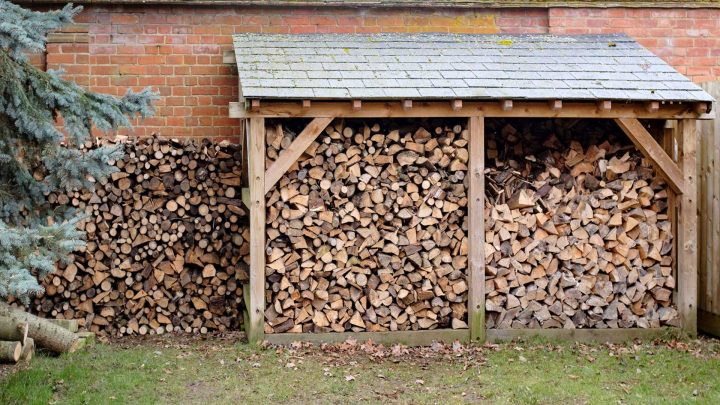Firewood is a popular way for many homeowners to heat their homes on chilly nights, gaining heat and that special feeling that comes with the soft glow of an open fire. A cozy fire often will remind you of nights spent sitting around a campfire. That might be your only experience with firewood growing up, gathering wood for a campfire during family vacations.

If your home now has a fireplace but you didn't grow up with one, it may take time (more than one season) to learn when and how to buy the best wood. You'll also find differences based on where you live, i.e. as supply and demand will change with density of homes and how close you are to forests where the wood is harvested. More important, you'll want to learn how to store your firewood safely once it arrives at your home.

What Are The Best Woods to Burn?
You want wood that will burn hotter, longer with less smoke and cleaner to minimize how often you need to clean your chimney. You'll find that hardwoods like maple and ash provide this steady heat better than soft woods like pine or cedar.
- Hardwoods – oak, maple, ash, birch, beech, hickory and most fruit tree … although these woods are more expensive.
- Softwoods – pine, alder, aspen, hemlock, spruce and redwood.
- Woods to avoid – pressure treated wood, driftwood, painted/varnished wood and engineered woods (plywood, particleboard, MDF, etc).
Tips for Buying Firewood
Timing when you buy firewood is important if you want the best choices. Things you'll want to consider when buying firewood, as they might influence when and who you buy from:
- When do you want to buy your firewood? Homeowners able to store large amounts of firewood can buy green firewood (cheaper) and store it for a year before using it.
- Do you want the firewood delivered or will you pick it up to save money?
- Do you prefer buying firewood that's already split or buying firewood in full rounds to save money? Some homeowners like the exercise they get splitting their own wood, although you've got to have the time to do this safely as swinging an ax when you're pressed for time isn't a good idea.
If you like planning ahead, your ideal supplier might be a local tree trimming company. Their primary business is trimming and cutting down trees plus removal in most cases. If you're willing to take firewood on their schedule and store it while it dries out, this might be a great strategy.
When trying to sort out alternatives, fireplace shops and equipment retailers who sell and repair chain saws are great resources for their knowledge of local customs and companies you might want to work with. Other ways to find your firewood include traditional newspaper ads and community bulletin boards, or Craigslist online.

Alternatives for Storing Your Firewood
It's common to see stacks of firewood at the back of people's yards, especially when there are several cords. Outdoor firewood storage where the wind and sun can help dry the wood is perfect but you also need to protect it from the elements or it will reabsorb moisture from rain and snow. Outdoor storage sheds like the one shown above are perfect for keeping your dry firewood, dry. The raised floor and sloped roof reduce the wood's exposure to the elements while the large opening allows easy access.
You probably want some firewood closer to the fireplace, so where exactly should you store firewood?
- Long-term firewood storage should be used for wood you're keeping for next season. It should be stored away from the house and outdoor living spaces.
- Firewood you expect to use for the coming season should be stored in a protected area near the house but not next to the house as there might be insects in the wood.
- If you use a wood stove continuously, it's worth keeping a few days worth of firewood indoors so you don't have to go outside if the weather is nasty. A small stack in the garage or fireplace will work but consider the path you'll take between all these locations, to minimize your steps and dirt.
- Having storage near the wood stove or fireplace is nice. There are lots of options so you'll want to consider the ease of storing (bag hooks for the bag used to carry in firewood works well), your ability to keep the area clean (open storage racks can be messy) and safety as you want the wood far enough away so it can't ignite.

Firewood Safety
We're not experts on this topic but found a report, Firewood: How to Obtain, Measure, Season and Burn, that does a nice job of covering firewood safety when collecting your own firewood, splitting firewood, as well as storing and burning firewood. We've also got a related article as every fire needs firewood and kindling.
Remember that firewood was once the primary source of heat for all buildings and many homes and lives were lost, when safety wasn't a top priority. We want you to stay warm, comfy and safe. So make sure you have a carbon monoxide alarm in the are and your home is equipped with working smoke alarms.
What's your biggest firewood challenge?

PS We've got lots of great tips on fireplaces for your home:




Leave a Reply